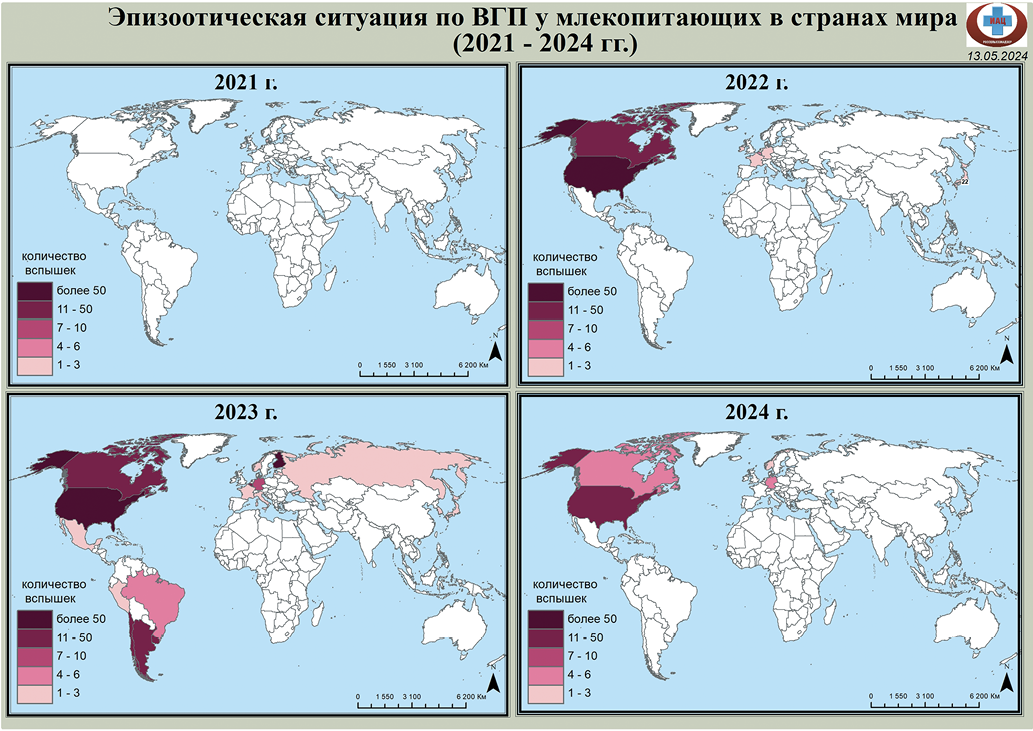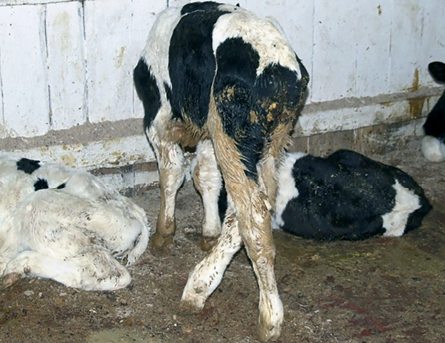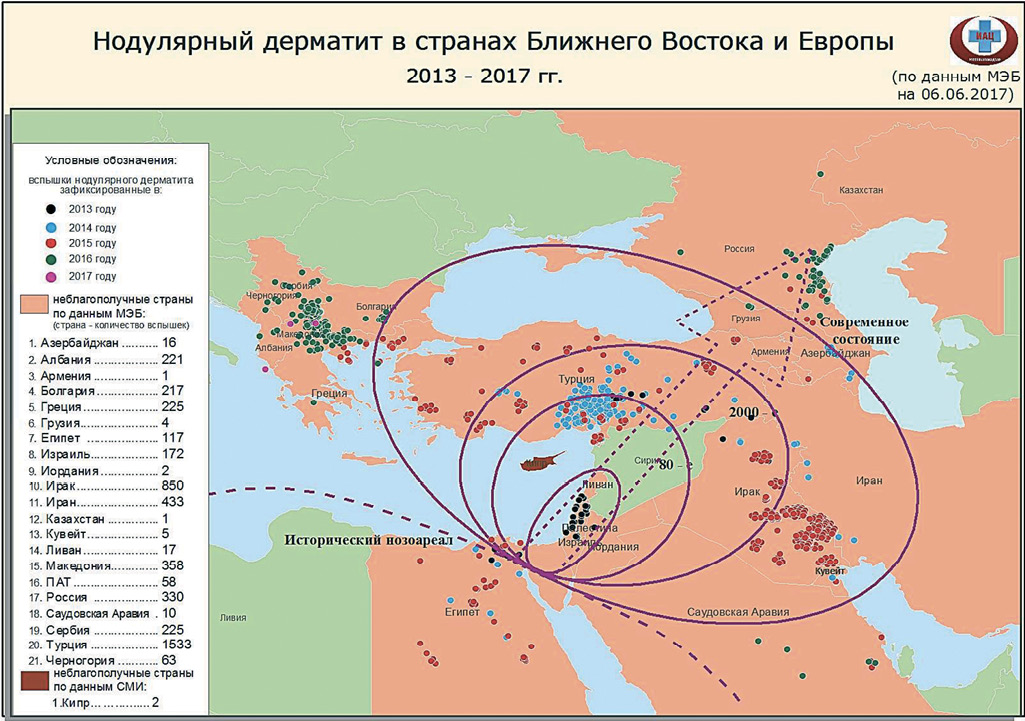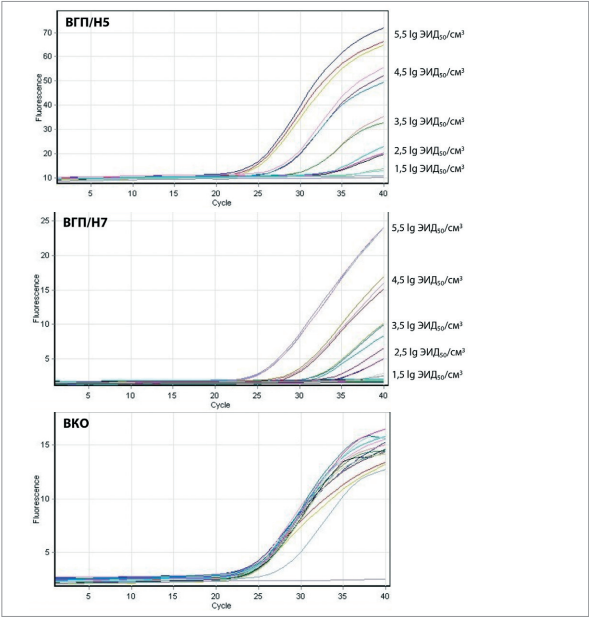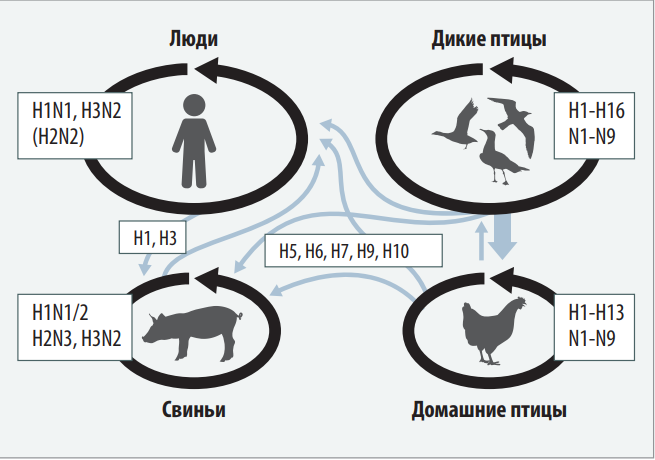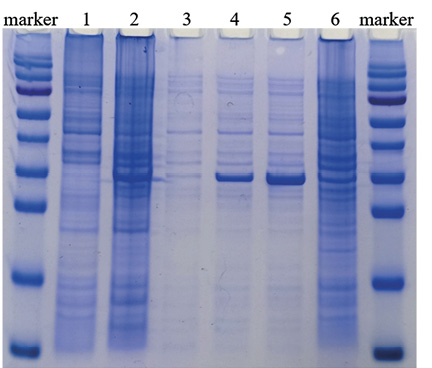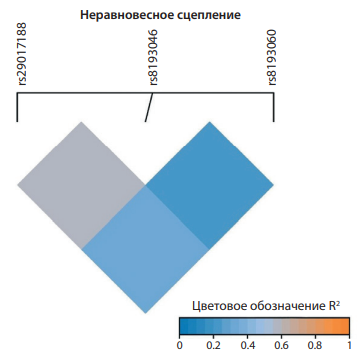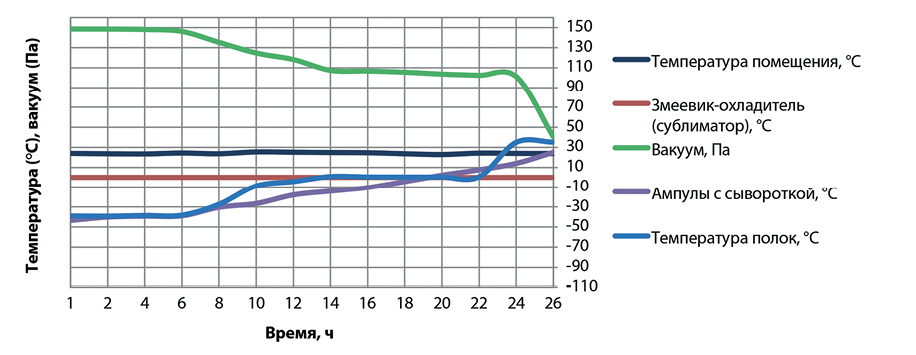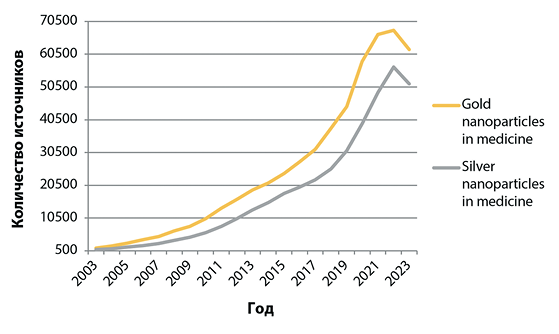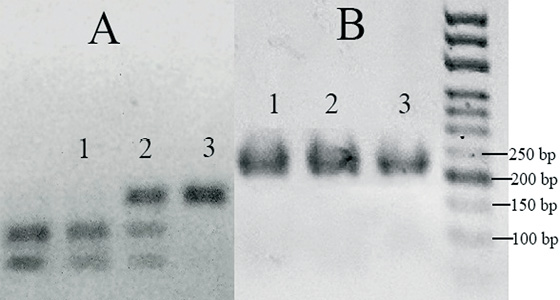REVIEWS | AVIAN DISEASES
Introduction. Highly pathogenic avian influenza currently requires the close attention of the international community. Determining the factors affecting transmission and replication of avian influenza virus in mammals and analysing the evolutionary processes involved will suggest which virus lineages will have the spillover potential and infect non-typical hosts, including humans.
Objective. The paper is aimed at studying the avian influenza epidemic situation in mammals, description of the features of the avian influenza epizootic process, retrospective analysis of influenza outbreaks in non-typical hosts.
Materials and methods. The study was carried out in the Information and Analysis Centre of the Veterinary Surveillance Department of the Federal Centre for Animal Health (Vladimir). The data obtained was based on statistical data from the database of the World Organisation for Animal Health WAHIS and scientific publications of foreign and domestic authors. Cartographic analysis was carried out using ArcGIS geographic information system (ESRI, USA).
Results. The avian influenza virus H5N1 epizootic process in 2022–2024 involved mammalians of various families (Bovidae, Mustelidae, Ursidae etc.) in which the disease had not been previously recorded. Strict biosecurity measures and updated alert systems are of crucial importance to effectively prevent the spread of the disease. In a limited number of countries (Bangladesh, Dominican Republic, China, Egypt, Indonesia, Laos, Vietnam, EU countries, etc.), vaccination has been used as a preventive and emergency measure to protect birds from influenza.
Conclusion. Transmission of highly pathogenic avian influenza virus to mammals of different species, including livestock, may be the start of a future pandemic. The recently recorded virus spillover indicates emergence of adaptive mutations and poses a threat to animal health, public health, food security and biodiversity.
REVIEWS | BOVINE DISEASES
Introduction. One of the most prevalent groups of pathologies detected in young cattle involves gastrointestinal diseases. They are often caused by infectious agents, among which rotavirus, coronavirus and pathogenic Escherichia coli are predominant.
Objective. Analysis and systematization of up-to-date information on the role of rotavirus, coronavirus and pathogenic Escherichia coli strains in the etiology of diseases of cattle, including young animals, data on the incidence of these infections in the Russian Federation and other countries of the world as well as relevance of vaccination against the above-mentioned pathogens.
Results. The paper provides information on the structure of rotavirus, coronavirus and Escherichia coli, on the biological properties of the pathogens, and factors affecting the disease form and severity. Based on the analysis of domestic and foreign scientific publications, data on the prevalence of colibacillosis, rotavirus and coronavirus infections are presented, and the main methods of their control are described. The significance of the vaccines for the prevention of these diseases is confirmed, the factors influencing the vaccine prevention effectiveness are listed, and measures to increase it are given.
Conclusion. The average global incidence of rotavirus infection is 32.7%, coronavirus infection is 18.4%, and colibacillosis is 39.1%. In Russia, the prevalence rate of the above-mentioned diseasesis 41.4, 33.1 and 30.2%, respectively. Thus, in the Russian Federation, the incidence of bovine rotavirus and coronavirus infections exceeds the global average by 8.7 and 14.7%, respectively. The colibacillosis situation in Russia is better than in most countries: the disease is reported by 8.9% less frequently than the globala verage. High genetic diversity and prevalence of the above-mentioned pathogens require an integrated approach to their control. One of the most effective methods is vaccination, which makes the development of effective and safe vaccines against rotavirus, coronavirus and Escherichia coli infections an urgent task.
Introduction. Lumpy skin disease (LSD) is currently a matter of veterinary concern due to the significant economic losses of the live stock in dustry. The risk of LSD spread and penetration into the disease-free countries is increasing every year. Therefore, timely monitoring of the infection spread for the development a strategy for this disease control becomes of current importance. Description of thedisease manifestations and course, evaluation of historical and statistical data on LSD spread in the Middle Eastern countries as well as the further joint actions at the international level are presented in this review.
Objective. Analysis of historical and statistical data on clinical lumpy skin disease in the Middle Eastern countries.
Materials and methods. The following electronic databases were used for relevant data searching and collection: PubMed, Web of Science, eLIBRARY.RU, mdpi.com, frontiersin.org, researchgate.net, etc. English literature data for 10 years were analyzed.
Results. In 1988 LSD spread outside the African continent then LSD stayed for a short time within the MiddleEastern countries and two years later spread further to the west and east. Despite the further spread, recurrent LSD outbreaks were reported in the Middle Eastern countries over the next few years. Many countries in the Middle East still face the problem of uncontrolled livestock movement, lack of high-quality laboratory diagnostics, and irregular contacts with international health and surveillance organizations aggravated by the unstable political situation in the region. These problems indicate the importance of LSD control at the international level, the significance of regional and international cooperation and effective biosafety policies.
Conclusion. Role of the Middle East region in LSD virus spread, probable causes of LSD infection in the region, trends for further actions for LSD control were determined.
REVIEWS | PORCINE DISEASES
Introduction. Pig farming, as a fast-growing branch of animal husbandry, is capable of prompt achieving a significant increase in the production of pork with high nutritional properties and biological value. One of the acute problems of pig farming is respiratory diseases of viral and bacterial etiology. In the current economic conditions, reducing the dependence of the Russian pig farmingon technological imports is of particular significance. Production of domestically manufactured feeds and veterinary drugs should be considered as the most important condition for achieving the technological sovereignty of the Russian Federation.
Objective. To analyze the provision of pig farming with domestic vaccines against such significant porcine respiratory diseases as swine influenza, porcine enzootic (mycoplasmal pneumonia), porcine reproductive and respiratory syndrome and circovirus infection as well as to identify factors that hinder the development of immunobiological drugs against these diseases.
Materials and methods. The information base of the research included data from pig-breeding organizations of the Russian Federation, the Rosselkhoznadzor’s state register of veterinary medicinal products, reference andspecial literature, publications of research institutions.
Results. Agents of swine influenza, porcine enzootic (mycoplasmal) pneumonia, porcine reproductive and respiratory syndrome, porcine circovirus infection are the most prevalent pathogens that cause respiratory diseases in pig son the pig farms. Over the past few years, Russian biofactories havebeen developing import substitution programs for the necessary immunobiological drugs. By the end of 2023, the domestic establishments manufactured 19.3 billion doses of veterinary vaccines, which is 3 billion doses more than in 2022.
Conclusion. Vaccination is the most efficient and cost-effective way to prevent viral infections. However, domestic immunological drugs against swine influenza have not yet been developed in our country, and vaccines against porcine enzootic (mycoplasmal) pneumonia, porcine reproductive and respiratory syndrome, porcine circovirus infection require modification due to high variability of the agents.
ORIGINAL ARTICLES | AVIAN DISEASES
Introduction. High pathogenicity avian influenza is a dangerous highly contagious viral infection of domestic and wild birds that recently has become widespread in Europe, Asia, Africa and Americas. The causative agent of the disease is type A influenza virus of subtypes H5 and H7. Real-time RT-PCR is one of the most rapid and effective techniques for avian influenza virus identification and typing, so development of the test system based on this technique with internal control to be used for control of the reaction main stages is of current importance. At the same time, the multiplex format of RT-PCR allows for simultaneous identification of several targets that reduces the consumption of reagents and the reaction time.
Objective. Development of test-system for detection of H5 and H7 avian influenza virus RNA with multiplex real-time RT-PCR in biological samples and its characterization.
Materials and methods. H5, H7, H3, H4, H10, H16 avian influenza virus, Newcastle disease virus, infectious bursal disease virus, infectious bronchitis virus, Marek’s disease virus, avian adenovirus isolates were used. MS2 bacteriophage was used as internal control.
Results. Optimal primer-probe combinations were selected, test-system characteristics were determined: specificity for homologous and heterologous avian disease viruses, analytical sensitivity, reaction amplification efficiency, repeatability and reproducibility.
Conclusion. Determination of the developed test system validation parameters has shown that it is specific only for H5 and H7 avian influenza virus, its analytical sensitivity for each subtype was 1.5 lg EID50/cm3 , and the amplification efficiency was 92 and 97%, respectively. The test system was validated through its use for testing biological samples submitted to the laboratory, the test results were consistent with the results of tests with standard diagnostic methods used in the Reference Laboratory for Avian Viral Diseases of the Federal Centre for Animal Health.
Introduction. Vaccination against high-pathogenicity avian influenza (HPAI) is a well-proven way to control the disease. Inactivated whole-virion products are the most popular among the influenza vaccines. It is important to study immunogenicity of “ARRIAH-AviFluVac” vaccine against currently circulating HPAI viruses.
Objective. To assess immunogenic activity of “ARRIAH-AviFluVac” inactivated vaccine against high-pathogenicity avian influenza virus (H5N1 subtype) which was relevant for Russia in 2023.
Materials and methods. For testing purposes 4 vaccine dilutions were prepared containing whole and diluted H5 avian influenza virus antigen (1/25, 1/50 and 1/100). Each diluted sample was used to vaccinate a separate group of 4-week-old chickens. On day 28 post vaccination, the chickens were challenged with avian influenza virus A/gull/Kirov/998-1/2023 H5N1, which was isolated during an outbreak in the Russian Federation and was phylogenetically defined as high-pathogenicity agent belonging to the Asian genetic lineage of HPAI subtype H5 (clade 2.3.4.4b). Dead and sick chickens were reported in the infected groups for 6 days.
Results. The chickens vaccinated with a whole antigen dose were found to be completely protected from the clinical signs after the challenge. A decrease in the antigen concentration in the vaccine volume decreased the vaccine-induced protection. The mortality rate after the challenge of control (intact) chickens was 10/10. An analysis of the dependence of the vaccine protectivity on the volume of the antigen immunizing dose showed that one inoculation dose contained 97 PD50. An analysis of the link between protection and strength of the post-vaccination humoral immunity allowed to calculate that the expected mean antibody titer in the group, which corresponds to 90% protection in the vaccinated birds, was 5.7 log2 , or ≈ 1:52.
Conclusion. “ARRIAH-AviFluVac” vaccine demonstrates high immunogenicity against
Introduction. Respiratory mycoplasmosis and infectious synovitis are economically significant and notifiable avian diseases, therefore, the issue of Mycoplasma gallisepticum and Mycoplasma synoviae control on poultry farms is of great importance. Vaccination is one of the ways to ensure specific prevention, however, when a vaccine is developed, its protective properties are assessed with special focus. Challenge does not always lead to the disease manifestation due to its predominantly chronic and factor-dependant nature.
Objective. Laboratory simulation of the factors that contribute to the disease manifestation and a histological analysis of pathological changes in the infected and vaccinated poultry.
Materials and methods. Seronegative and vaccinated 67-day-old Haysex white cross chickens were selected for the experimental purposes. We used S6 strain of Mycoplasma gallisepticum, WVU 1853 strain of Mycoplasma synoviae and A/chicken/Amursky/03/12/H9N2 strain of low-pathogenicity avian influenza virus.
Results.The associated infection of mycoplasmoses and low-pathogenicity avian influenza is manifested as a disease with pathohistological changes that include mild respiratory and joint disorders. Histological tests of the infected non-vaccinated poultry revealed damaged tracheal ciliated epithelium with desquamation. The poultry vaccinated against mycoplasmosis and experimentally infected showed no signs of epithelial separation, however, local submucosal edema was observed in the trachea. Non-vaccinated poultry infected with low-pathogenicity avian influenza virus H9N2, Mycoplasma gallisepticum and Mycoplasma synoviae demonstrated dystrophic changes and lymphocyte infiltration in the third eyelid gland which suggested an inflammation. Lymphocytic lung tissue infiltration was detected both in the vaccinated and non-vaccinated experimentally infected poultry. All groups of chickens, except for the control one, demonstrated lymphocyte depopulation in the cortical substance of the fabricium sac.
Conclusion. The study resulted in developing a challenge procedure for poultry using Mycoplasma gallisepticum and Mycoplasma synoviae agents, in defining conditions for clinical manifestation of mycoplasmoses, in detecting infection-caused pathological changes at the cellular level.
ORIGINAL ARTICLES | BOVINE DISEASES
Introduction. Brucellosis remains one of the most common highly dangerous zoonotic infections. Resistance to the pathogenic microorganisms of the genus Brucella depends on the appropriate cell-mediated immunity, which includes the activation of the bactericidal mechanisms of phagocytes. Despite the repeatedly proven role of neutrophils in the fight against many bacterial pathogens, the functions of these immunocompetent cells in the setting of brucellosis have long remained unstudied.
Objective. The study aimed to examine the functional and metabolic activity of neutrophils in young cattle sensitized with a non-agglutinogenic strain of Brucella.
Materials and methods. The functional and metabolic state of neutrophils in young cattle immunized against brucellosis with a vaccine produced from the non-agglutinogenic RB-51 strain of Brucella abortus was assessed on days 7, 14, 21, 28, 35 after immunization using nitroblue tetrazolium (NBT) test, as well as based on the level of the enzymatic activity of myeloperoxidase and the content of non-enzymatic cationic proteins. The measurements were made photometrically in the spontaneous and stimulated variants of the test, with subsequent calculation of stimulation coefficients. Disintegrated and corpuscular antigens prepared from Brucella vaccine strains with different antigen structures were used as reaction stimulants.
Results. It was found that the functional and metabolic status of neutrophils in young cattle immunized with the non-agglutinogenic strain of Brucella is characterized by increased neutrophil activity in the NBT test on days 7 and 35 of the experiment, by the absence of significant changes in the enzymatic activity of myeloperoxidase and a decrease in the content of non-enzymatic cationic proteins on days 7–14 after vaccination.
Conclusion. The most pronounced increase in stimulation coefficients was observed when using disintegrated Brucella antigens as a reaction stimulant. The highest stimulation coefficients were registered on day 28 after vaccination during the assessment of the oxygen-dependent metabolism of neutrophils with the NBT test and on day 14 during the assessment of the oxygen-independent metabolism.
ORIGINAL ARTICLES | CORONAVIRUS DISEASE (COVID-19)
Introduction. The new coronavirus infection (COVID-19) agent SARS-CoV-2 has become widespread in the world and has caused the pandemic that started in 2019. The virus is a zooanthroponotic infectious agent that causes infection in humans as well as in many mammal species. To date, SARS-CoV-2 has been reported both in domestic and in wild animals. Moreover, successful experimental infection of certain animal species was reported during the studies. There is also the evidence that infected animals can transmit the virus to other animals in natural settings through contactincluding virus transmission between animals of different species. Currently, some researchers fear that SARS-CoV-2 may spread to mammalian species in the wild that will become a natural reservoir responsible for this infection outbreaks in humans. Furthermore, the virus effect on potentially susceptible wild animal species, including endangered animal species, is currently not fully understood. Therefore, the infection spread in wild animals requires further study. This requires highly sensitive and specific diagnostic methods. Enzyme-linked immunosorbent assay (ELISA) using SARS-CoV-2 nucleocapsid protein as an antigen can be used for serological surveillance of the new coronavirus infection in animals. Recombinant protein used as an antigen is the most preferable because of its safety.
Objective. The study was aimed at preparing highly concentrated recombinant SARS-CoV-2 nucleocapsid protein and testing it for antigenic activity and specificity.
Materials and methods. The following was used for the study: SARS-CoV-2, pQE plasmid, Escherichia coli JM109 strain. The following was performed: reverse transcription and polymerase chain reaction, molecular cloning, recombinant protein synthesis, recombinant protein purification, indirect ELISA was used.
Results. Molecular cloning of SARS-CoV-2 N-gene was carried out using prokaryotic expression system. Escherichia coli clones producing 33 kDa recombinant SARSCoV-2 nucleocapsid protein were prepared. Optimal expression and purification conditions for highly concentrated antigen preparation were determined. It was shown that optimal inducer concentration was 0.5 mМ, optimal expression period was 4 hours. Urea at a concentration of 8 M as a denaturing agent and optimal imidazole concentration of 0.4 M in the elution buffer were selected based on the results of study of optimal conditions for recombinant antigen purification. Use of the optimal expression and purification procedure allowed us to prepare 1.5 mg of purified antigen from 100 mL of Escherichia coli culture. The recombinant protein demonstrated its high antigenic activity and specificity when tested with indirect ELISA.
Conclusion. Preparation of highly concentrated recombinant SARS-CoV-2 nucleocapsid protein enables its further use as an antigen for ELISA test system for detection of antibodies against SARS-CoV-2 nucleocapsid protein in animal sera.
ORIGINAL ARTICLES | VETERINARY MICROBIOLOGY
Introduction. Inflammatory mammary diseases in cows remain the most common challenge in dairy industry, notwithstanding the improved preventive measures and treatment schemes. One of the methods to prevent mastitis in dairy cows is the genetic selection of the most disease-resistant individuals. Toll-like receptor 4 (TLR4) plays a central role in the innate immune response. There are publications about TLR4 significance for mastitis development, its genetic polymorphisms associated with somatic cell counts.
Objective. Determination of genetic diversity and association with the development of clinical mastitis for three polymorphic locuses of TLR4.
Materials and methods. To achieve the objective cattle health history (n = 421) was used, subclinical mastitis was diagnosed using rapid test for somatic cell counting in milk, TaqMan real-time polymerase chain reaction was used for genotyping of cattle for rs8193046, rs8193060, rs29017188 polymorphisms. Results. Association studies established that rs8193046 и rs29017188 polymorphisms are the most promising candidates to be used in selection programs aimed at mastitis risk mitigation in the Ural populations. For rs8193060 no reliable results of association tests are obtained, though risk of mastitis in GCG haplotype-animals (for SNP rs8193046, rs8193060, rs29017188 alleles) is statistically lower.
Conclusion. It is noted that the abovementioned polymorphisms can be used for marker-assisted selection of cattle to prevent risks of mastitis in the populations in the Ural.
Introduction. The distribution are a of Chlamydia infection in livestock and wild animals currently extends across almost all continents. At present, initial diagnosis, screening tests and certain stages of epizootiological investigations aimed at Chlamydia carrier detection are conducted in the Russian Federation using the “Antigen and Serum Kit for Serological Diagnosis of Chlamydiosis in Livestock”. It is important in theproduction of diagnostics to ensure stability of different test kit components during their storage and transportation. One way of addressing this issue is to stabilize diagnosticum components by freeze-drying.
Objective. The study was aimed at optimization of freeze-drying process for specific anti-Chlamydia serum, the serum assessment for compliance with characteristics laid down in the technical specifications for the test kit control and testing of the serum for its stability.
Materials and methods. The serum was prepared using blood from sheep immunized with emulsion vaccine based on Chlamydia psittaci AMK-16 strain. Prior tofreeze-drying, the hyperimmune sera were subjected to freezing to a temperature of minus 60 °С. The sera were freeze-dried using a Scientz 30F freeze-dryer (China). Two freeze-drying procedures with different temperature conditions and chamber pressures were applied. The resulting sera were tested for compliance with the technical specifications for thediagnostic test kit. The freeze-driedsera wereput intostorage for 24 months andtested with complement fixation test during this period.
Results. Based on the test results, the freeze-drying procedure employing a lower pressure and the highest heating temperature was found to be the most effective for the specific sera. The serum tests for compliance with characteristics laid down in the technical specifications for the test kit showed that the serum quality met all relevant requirements. The stability test results demonstrated that the hyperimmune serum freeze-dried using the improved procedure remains specific during 24 months.
Conclusion. The work performed allowed for optimization of freeze-drying process for specific anti-Chlamydia serum intended for the diagnostic test kit. The resulting serum is fully compliant with characteristics laid down in thetechnical specifications for the diagnosticum. It was established that the freeze-dried serum shelf life is at least two years, during this period the serum retains its activity and physico-chemical properties.
REVIEWS | GENERAL ISSUES
Introduction. Due to increased prevalence of different diseases and antimicrobial resistance development in recent year, such advancements of the humankind as nanomaterials have gained the significance. A relatively small amount of data (lack of data) on biological distribution, pharmacokinetics and potential toxicity of nanometals for the organism hinders the development of safer and more effective drugs.
Objective. Analysis and summary of data published in modern scientific literature on studies of metal nanoparticles and silver nanoparticles, their distribution and impact on human and animal health, as well as their use in biomedicine and veterinary medicine.
Materials and methods. Publications were searched for in eLIBRARY.RU, cyberleninka.ru, scholar.google.ru, www.mdpi.com, www.researchgate.net, www.sciencedirect.com, PubMed database. The literature published during last six years and more recent publications have been used.
Results. Nanostructures can be organic, inorganic and hybrid. One of the most studied inorganic materials are metal nanoparticles. They are widely used both in engineering and biomedicine, in particular in veterinary medicine, as bactericidal and virucidal agents, anti-cancer drugs and diagnostic tools. In the CIS members, silver nanoparticles are most commonly used. It is known that shape, size and surface electric charge affect the antibacterial activity of nanostructures. Several types of silver-based drugs are available at the market now: colloidal, silver cluster and zerovalent silver. Zerovalent silver-based drugs are least toxic. Nanoparticle-based drugs can reach target tissues through local administration such as oral, inhalation, subcutaneous administration, and directly into blood flow by intraperitoneal or intravenous injection. Biodistribution of metal nanostructures depends on particle type, their size, surface, interaction with proteins as well as routes of exposure, doses and hydrophobic properties. Pharmacokinetics of silver nanoparticles does not differ from that of metal nanoparticles, furthermore nanosilver does not accumulate in spleen, liver, kidneys and lungs which is potentially toxic.
Conclusions. Further in-depth studies of nanoparticle biodistribution, compatibility and potential toxicity are needed to facilitate the development of more effective and safe therapeutic drugs.
ORIGINAL ARTICLES | GENERAL ISSUES
Introduction. Zoophilic flies play a significant role in animal disease transmission, and insecticide resistance being a relevant veterinary issue globally is an obstacle to effective fly population control. Molecular methods are more commonly used to monitor and diagnose insecticide resistance in insect populations.
Objective. The study aims to assess distribution of the main mutations associated with resistance to pyrethroids, organophosphorus compounds and carbamates in three natural populations of Musca domestica L. collected in 2021–2023 in livestock facilities of the Tyumen Oblast.
Materials and methods. Genotyping of CYP, vssc and ace-2 genes was performed using polymerase chain reaction and restriction fragment length polymorphism.
Results. One mutation in the vssc gene (L1014F) associated with resistance to pyrethroids and two mutations in the ace-2 gene (G342A, G342V) conferring resistance to organophosphorus compounds and carbamates were found. The resistant allele L1014F was present in 40–70% of the tested insects of all three populations with 30–55% frequency. The G342A allele was found in 10 and 60% of insects from two populations with frequencies of 5 and 30%, respectively. The G342V allele was detected in 40% insects of only one population with a frequency of 25%.
Conclusion. The results obtained indicate the potential for conferring resistance to pyrethroids, organophosphorus compounds and carbamates in the studied populations of Musca domestica, which should be taken into account when selecting disinsectants for livestock-keeping facilities and protecting animals from insects. Further molecular tests of Musca domestica flies from the regions bordering the Tyumen Oblast will be useful for developing a strategy to contain spread of resistant alleles in local populations.
ISSN 2658-6959 (Online)



